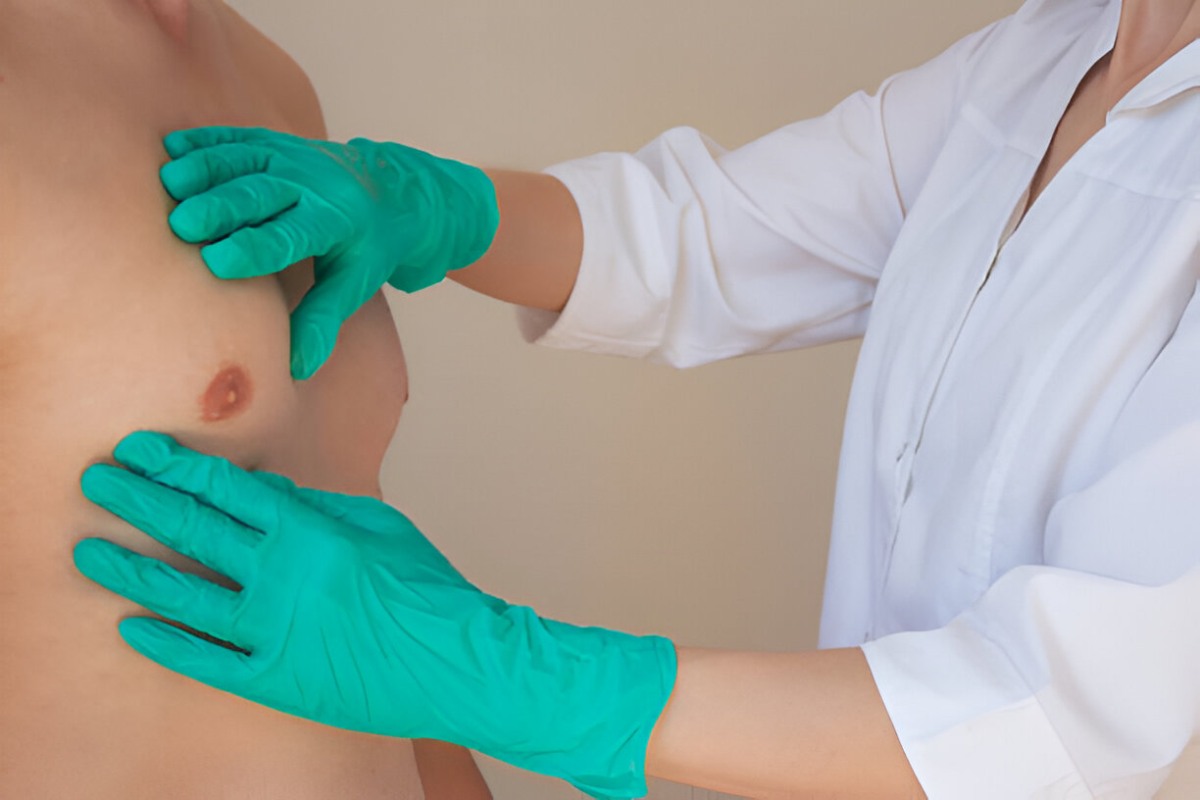When males developed an enlarged breast, they might suffer from gynecomastia or what many refer to as man boobs. The condition is more common than you think, affecting up to 60% of boys, according to a study. More than 66% of men over 50 may also develop the condition. Despite being common, it’s a sensitive topic for many and may affect a person’s quality of life. Fortunately, you have the option to undergo surgery and other treatments if you’re affected by it.
Understanding Gynecomastia
Gynecomastia results from an excess of breast gland tissue, leading to enlarged boobs. It’s usually benign but is often perceived by many as cancerous, which underscores the importance of truly understanding the condition. What causes the breast tissues to become enlarged? This is primarily due to an imbalance between two hormones: estrogen and testosterone. The former promotes the growth of breast tissues, while the latter limits it. The imbalance can occur as early as infancy (aged 0 to 3 weeks) and as late as 50 years and up. In fact, the condition becomes more common at this age.
Gynecomastia may be mistaken for pseudogynecomastia, which is basically fat accumulating in the chest area, resulting in larger breasts in men. While pseudogynecomastia often follows after weight gain, the real man boobs go deep into the glandular level of breast tissues.
While gynecomastia isn’t dangerous like cancer, it can impact a person’s emotions and psychology. Most affected men may start withdrawing from activities where they’re likely to expose their chests.
Types of Gynecomastia
This condition can range from hardly noticeable to something difficult to hide. They can affect just one breast (unilateral gynecomastia) or both (bilateral gynecomastia). Both are further categorised into different grades (Type 1-4), depending on severity. When taking a more granular approach, 3 extra grading levels (Type 5-7) are added.
Type 1 – This is often characterised by puffy nipples on breasts with glandular tissues that are dense and firm. Men who are thin and with lean body mass can have this type of gynecomastia.
Type 2 – Too much glandular and fatty tissues can result in the kind of man boobs that affect a huge number of the afflicted male population. Treating it may involve liposuction, followed by contouring to ensure the breasts match what a normal chest should look like.
Type 3 – When a man’s chest is at a 45 to 60-degree angle, their enlarged breast will sag noticeably. Depending on the age and skin quality, the sagging can be more prominent. Removing the excess tissues from the breast often involves surgery for gynaecomastia in Sydney.
Type 4 – If the previous type puts the chest up to a 60-degree angle, Type 4 brings it up from 60 to 90 degrees. The breasts will obviously sag, and reducing the size will also require the removal of excess skin to improve the chest area.
It’s obvious that the enlargement, depending on the size, can cause embarrassment. If you love going to the beach or taking your shirt off, having gynaecomastia might prevent you from doing what you love.
Gynecomastia and Its Impact on Quality of Life
Low Self-Esteem
Men with man boobs can have a female-like appearance, which can cause physical dissatisfaction and bring down their self-esteem. Studies show that men afflicted with the condition tend to have social phobias at higher levels, which is why psychotherapy is recommended post-surgery. With the right treatment, boosting self-esteem will be easier.
Sexual Identity Confusion
From the term man boobs alone, it’s easy to see why men with enlarged breasts will end up confused over their masculinity. After all, boobs are often used to refer to women’s breasts. However, this confusion shouldn’t come as a surprise since the hormonal imbalance is more on the female hormone estrogen. As if the sexual identity crisis isn’t bad enough, some cultures view man boobs as a curse or stigma. So the impact on some men is not only physiological but psychological as well.
Depression
The combination of low self-esteem, social phobia, and confusion over sexual identity can naturally lead to depression. Add to this poor body image, and you have a dangerous concoction that can have a lethal effect on afflicted men. Worse, they’ll find it difficult to open up about their condition, which isn’t helping at all. Unless they speak up, professional advice and diagnoses will not happen. They won’t know which treatment is right for their level of breast enlargement, either.
Social Isolation
Men who want to hide their condition will likely avoid interacting with family and friends. This reaction is more common in young adults than in older adults. The more they withdraw from social activities, the more they’ll feel isolated and marginalised.
Clearly, gynecomastia can be harmful if not addressed properly. While the health risk is low, the negative impact on other aspects of life is high. It’s important to know whether surgery can help affected men regain their self-esteem and a better quality of life. If you or anyone you know has man boobs, it’s best to have it checked. Visit a specialist surgeon like Dr. Rohit Kumar for more information about male breast reduction.

